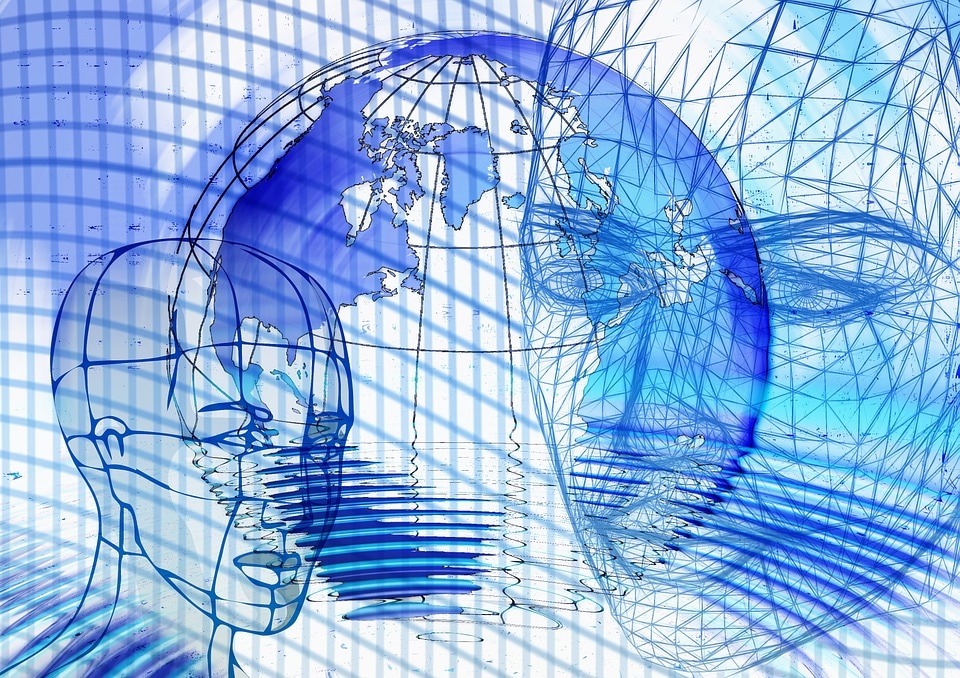|
Join the Growing your Greens Movement! Over 1200 videos and 50 million views! Phoenix Voyage is inspired by John's mission and dedication to uplifting people worldwide. And now, we're producing a NEW, FREE eBook series just for you! Download for FREE, enjoy and share with your friends & family.
2 Comments
written by: Elizabeth Donavan
I didn’t take a course on it—I just did it—as easily as breathing. My cousin, who was taking a course in it, said I was a natural, and boolean logic seemed common sense to me. I did programs for the engineering department as well. They seemed to like it, but I never got a “thank you” for it. It compressed hours of work with a legal pad and steps to put into a calculator into seconds. I have to admit I was way better at programming than anything else at the time, but after applying myself toward electromagnetic theory, that came as well
A few years later, after the Challenger met it’s big challenge in the sky, I got a Commodore 64, which was actually only 32K of RAM. That one also ran on MS DOS, and was pretty primitive by today’s standards—not as bad as an Altair, but at least you could put programs in without knowing machine code or binary (later I would discover that my father knew how to program in machine code, a skill that I never would have guessed). Then I discovered the Apple Mac—the big beige box with the monitor inside. I was thinking of getting the next generation of Commodore, the Amiga, but decided against that after getting burned the first time. It was 1984, and that was the 128K Mac, with dual floppy drives, and no hard drive. The earlier ones had program storage on cassette tape, or a Wollensak reel to reel tape recorder. This one was going uptown with a 3.5 inch floppy—WOO HOO! The Mac OS was a graphical interface, and I got out of the command line interface world. It was a big step up. I also had a floppy disk of MS Basic, and I continued to program in that. There were upgrades after upgrades, and I kept track of every one—from 128 to 512 to 1024K. I stuck with the Mac OS, while taking trips to the Windows world from time to time. I put a book into the Mac—and did all the typesetting with Pagemaker. I learned dozens of programs, and had a whole bookshelf filled with program boxes. I sold the Mac Plus, and went to a Mac LC, the “Pizza Box” as some would call it. I had that one for a few years, upgrading to a G3, G4 and then a G5. At that time, I was running Windows 98 with an emulator when I had to, as there were still programs that only ran in the Windows world. I briefly tried loading an operating system called “Linux PPC 2000” that was a gray hair and ulcer generator, and gave up on it as the installer would crash constantly. I could never, ever get it to load. So at that time I concluded that Linux was a novelty, and nothing more. I couldn’t find many apps worth pursuing, and left it at that. By that time the G5 came along, and Apple did a major fubar. Some would say they “screwed the pooch”. They, in their infinite corporate wisdom, decided to change processors. They had an advanced RISC reduced instruction set processor (PowerPC), and changed it to the intel CISC (complex instruction set) processor that took more clock cycles to perform the same operations. As if that weren’t bad enough, they went from a Linux-like OS to Unix. OS 10, the Unix version was horribly buggy, and slowed things down even further. Then 10.5 came along, and they only would provide an upgrade for the intel machines. There was only one problem with that—they stopped selling the G5 machines only a couple of months earlier, so those people who got a nice and shiny G5 discovered they had to buy a whole new computer if they were going to upgrade their OS. Saying they were not happy was an understatement. Thus began the exodus from Mac OS. The open source community was sympathetic, and several versions of Linux popped up—Red Hat, Yellow Dog, and so forth. I think it was a backlash against what Apple did with their customer base, as all of the OSX flavors were based on cats—lion, mountain lion, leopard and the like. So they named theirs after dogs. I dabbled in Linux, and had Red Hat and Yellow Dog. I got it to work, but there were not many “packages” or apps available at that time, so I stayed with the Mac OS. Apple stumbled again. After Mavericks, they came out with an abomination they called El Capitan. It was not compatible with many of their own apps, and many did not like the slowdown in performance, let alone constant crashes. The one that came out after that was even worse, called Sierra. The ongoing joke was the next version was going to be called sayonara. Mavericks had some bugs of its own, the most serious of which was a directory fragmentation that would cause the OS to self destruct over time. A utility called Disk Warrior fixed that, but it cost a little over $100. Apple put a self destruct into their OS so that you HAD to upgrade, as they no longer supplied their OS on a DVD, and you had to go to the cloud to reinstall the crumbling OS, so if they took your OS off the cloud, you had to upgrade to a garbage OS. That was not good. It took the choice away from the user who was your customer, and treated them like an idiot for buying your computer. There had to be an alternative. So fast forward to a few months ago. In 2015, I was looking at Ubuntu, and different flavors. Unity was OK, although a little funky. It looked like it was designed for a tablet PC. Lubuntu, the low end, was too low for me. Xubuntu, one supposedly for the techno geeks, didn’t seem geeky enough. Ubuntu Studio was a memory hog, and sometimes crashed. I had a MacBook Pro that was in need of an upgrade, and it was a good experiment. I looked at all the flavors, and Mate (like the tea from South America, pronounced “Mah tay” instead of “OOOY Mate”). I liked it. So I did an ISO disk, and put it in the Mac. I am writing this using Libre Office, which is the open source version of Microsoft Office, and it works better. I have found almost all the apps I need in Linux, and there are a huge selection. Mate has a cool one click installer that Mac OS or Windows doesn’t have. When I flip the lid open, it takes 3 seconds to log onto the net, in contrast to one minute for Mac OS. It is at least 3 times faster. The OS was only 1.5 gigs in size, as opposed to a nearly 8 gig download off the cloud. With a slow connection, it can take hours to download the OS, and techs groan when they learn this. The Mate install took a couple of minutes, and upgrades are just as short. Apps are tiny in comparison to eitherWindows or Mac, and work much faster. After downloading apps like a kid in a candy store, The 250 gig hard drive had 200 gigs free. It reminded me of the OS9 days. I put Wine in, which is kind of like an emulator that translates DLL calls on the fly. I put in Windows apps such as IMVU, a chat program and Ye Aulde Microsoft Office, which worked like a champ. I was officially impressed. What did it cost me? Nothing...nada...zip. It was free. There is a huge selection of software in the open source community. Some versions are free, and others are free at the entry level, and you pay for the professional upgrade. So the total cost for my upgrade project was zero, and I tripled the speed of my computer. I did find that there was a lack of selections of 1.6:1 aspect ratios for the monitor for resolutions, so I was stuck with a higher resolution than with the Mac OS. I learned to live with that. I tried Firefox, and Chrome. They handled the video well, although the upgrades for Firefox seemed to occasionally have problems with downloading extra files. I found Skype for Linux, and used that. Libre Office had a one click export to PDF that was a nice feature. The Atril reader worked well for PDF files. I got Calibre for ebooks, and started a collection of those. Then I tried “system tweaks.” There were settings for “Cupertino” and “Redmond”. Cupertino puts a tray at the bottom of the screen that looks like Mac OSX, and Redmond makes it look more like Windows. I wanted an authentic Linux experience, so I chose neither, and went with the default Mate screen. I also put in a screen saver with astronomical photos that was nearly identical to the one in the Mac OS. Now, unless you looked at the top and bottom of the screen you would think it’s running on Mac OS. One other thing: the menus are customizable, so you can change the menus to suit your needs. This is gone in the Apple and Microsoft worlds, but not in Linux. And then I HAD to go to Windows 10 for my drafting program...OMG! The wait for the whole thing to boot was almost painful. I did some high speed thumb twiddling while it loaded on the big tower computer, then made a cup of coffee, came back and it was still loading. I have to admit I am spoiled now. Once you drive a Lamborgini, a Yugo just will not do. I am a convert to the holy church of Linux. YOWZA! However, I will not be handling snakes or passing around the mason jar filled with strychnine. That is reserved for the Windows crowd. In the past, it was said that the best selling point for the Mac OS was a lack of viruses. That didn’t last long. Right now that is a selling point for Linux, and I wonder if we will see the same problem later. Only time will tell. Am I happy with the upgrade? You betcha! Would I recommend it? Yes, I would. The Linux world has also introduced me to a different selection of software that is not available in the Windows and Mac worlds. I got network analysis tools that were professional grade in the open source community that would normally have cost me hundreds of dollars. I had to get this for a friend that wanted some web sites traced along with a few emails. The performance was stunning, and a lot of fun! Three of my friends were constantly after me about trying Linux again, and Ubuntu in particular, and I was too cynical at the time to have an open mind. I had to find out for myself. Sure, I have done programming in the past, but I did not have to use those skill sets to install Mate. It did it all by itself. If you never did programming, Windows and Mac OS are OK, but for those who want to get into the nitty gritty Linux is the way to go. However, if all you want is performance, it excels at that as well. Look Ma! I took off the training wheels! written by: Elizabeth Donavan Remember the Terminator movies with the T-1000? They called it a mnemetic polyalloy. It was supposed to be made up of little nano machines that mimicked living cells, and could copy any shape it was programmed to.
Well, it turns out that is not too far from the truth. There is an alloy called nitinol, which is a combination of nickel and titanium, (with a variant being nickel, titanium, osmium and lanthanum), and it can be “programmed” to return to a specific shape on reaching a certain temperature that is determined through the proportion of nickel to titanium. For example, you can have a stent that reinforces an artery programmed to actuate at the temperature of the blood, and crush the stent so it is easily maneuvered into place, and once it is there, the temperature of the blood causes it to regain its programmed shape. But it gets better! It turns out that it needs energy to do this, and in order to return to that shape, it draws extra energy from the environment. So it “eats” energy in order to shape shift—just like a living organism eats food to do what it is programmed to do, such as a bacterium or similar life form. So is nitinol, which is also called “bio-metal” really alive? Not really, as one of the requirements is reproduction, which so far it cannot do yet. But it is close. The metal grain structure resembles living cells, even though it cannot come close to living tissue. But it can be considered “nano tech”, as it is programmable from a molecular level. So even though nano-tech remains in the sci-fi realm, this one if very real, and has been with us since at least 1961. So why are we not using it yet? Well we are, but the alloy is expensive, as it is not mass produced. The argument is that titanium is the culprit, and is horribly expensive. However, this is not the case either, as titanium dioxide is the base of white paint, having replaced the more toxic white lead. If their argument were true, then it would cost $100 per gallon to paint your ceiling. What is more likely is what we are looking at is an artificially inflated price for technology that “they” do not want us to use. Another point is that some researchers are finding out that the “energy eating” aspect of nitinol has a bizarre quality to it that is over unity, and it seems to lower the surrounding temp to do work, instead of the other way around. Some are saying it is negentropic, and has an efficiency way over 100%. Whatever the case, this material is fascinating to work or play with, and will prove to be a valuable asset in the future, as it can replace hydraulic actuators without having to worry about pumps and leaky plumbing. In fact, it is so powerful it has been estimated to produce up to 20,000 pounds to the square inch of force, way beyond what hydraulic actuators could possibly produce without blowing seals in the process. It is being used in robotics, surgery for implants—as the body does not reject the alloy— and in plumbing for anti-scald shower heads and valves. The actual number of applications are staggering, as it can replace anything that actuator motors or hydraulics can do. The alternative energy applications are possible as well, as motors that can run on waste heat as a co-generation power plant. I predict we will be seeing much more of this in the future, as the economics cannot be suppressed forever, and once it is “turned loose”, we will see amazing things with this material, such as boats that can be stored in a backpack with ice, and then when thrown into a river, self-actuates into a usable boat, or camping gear that self-actuates such as a tent with a small jolt of current from a solar-charged battery. The applications are only limited by the imagination.
|
AuthorsWe welcome guest bloggers 5 more blogs to check out!
|
|









